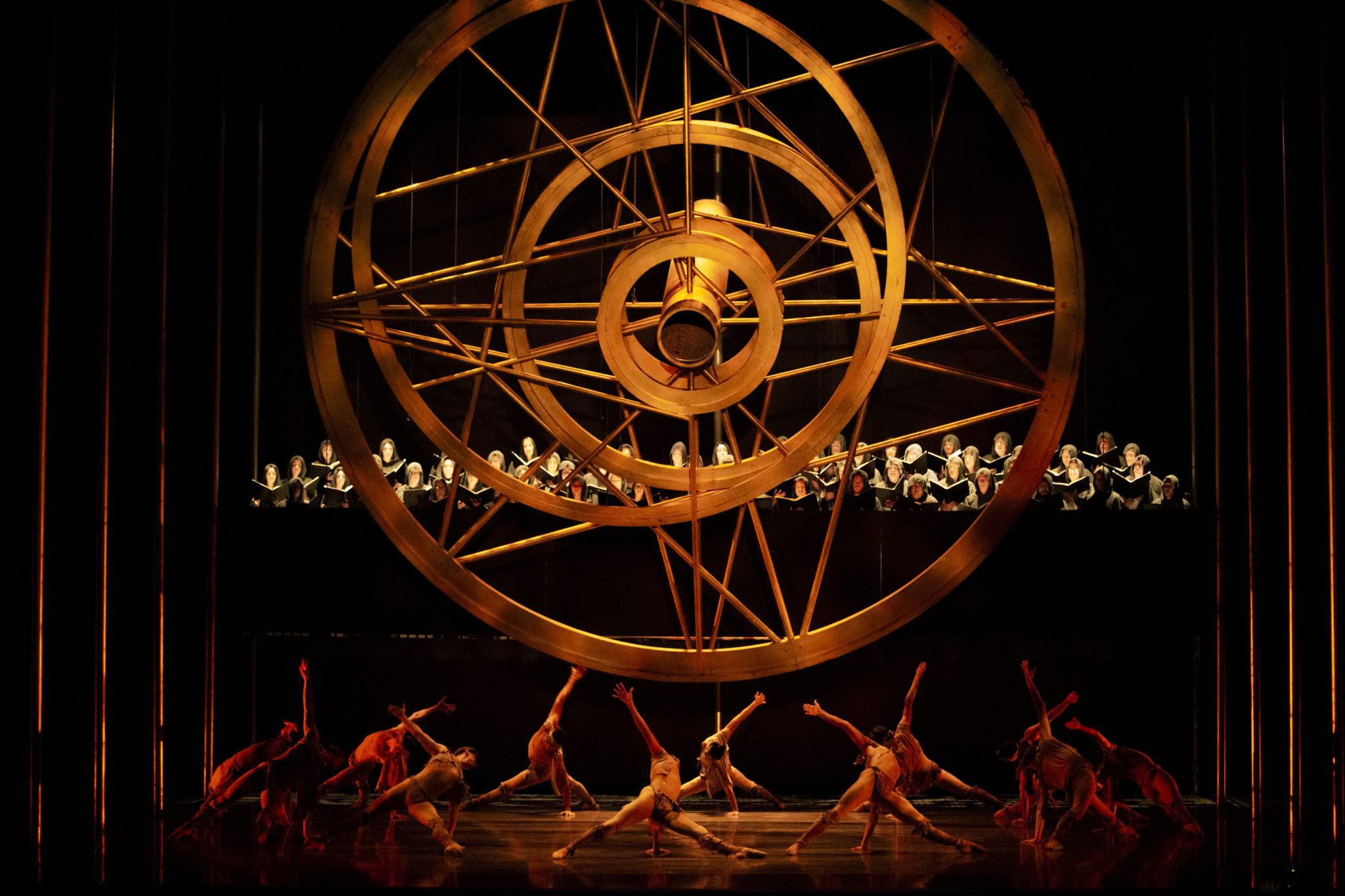
Pacific Northwest Ballet is starting their 2019/2020 season (their 47th, for anyone keeping track) with a powerful pair of 20th century ballets: George Balanchine’s Agon and Kent Stowell’s Carmina Burana. Both ballets had their PNB premiere in 1993 (the same year I started attending regularly) but otherwise, they could hardly be more different.
Agon
Music: Igor Stravinsky
Choreography: George Balanchine © The George Balanchine Trust
Staging: Francia Russell
Lighting Design: Randall G. Chiarelli
Running Time: 30 minutes
Premiere: December 1, 1957; New York City Ballet
Pacific Northwest Ballet Premiere: March 30, 1993
Agon is a dancers’ dance, pure contemporary ballet with no story, character, sets, and almost even costumes (dancers wear black leotards with white tights or white with black pants) to distract from the movement. Even the music by Stravinsky is seems to draw attention to the dancers’ movements. For weeks before opening night, dancers’ Instagram feeds vibrated with excitement over practicing this piece.
Carmina Burana
Music: Carl Orff
Choreography: Kent Stowell
Scenic Design: Ming Cho Lee
Costume Design: Theoni V. Aldredge and Larae Theige Hascall
Lighting Design: Randall G. Chiarelli
Running Time: 70 minutes
Premiere: October 5, 1993; Pacific Northwest Ballet
Carmina Burana is a true crowd-pleaser in every sense of the word. There is something for everyone with exuberant, accessible dancing, a huge on-stage choir, singers interacting with the dancers, evocative costumes, Carl Orff’s epic, action-movie-worthy score, and of course, a 2,500-pound, 26-foot wide golden wheel of fortune rotating above it all. For weeks before opening night, audiences were buzzing with excitement over getting to see this sexy spectacle again.
Better Together
There are some points of connection between the two. Agon‘s music is by Stravinsky; Orff’s music for Carmina has been compared to Stravinsky’s “Rite of Spring” – more, I think, for their epic power than for actually sounding anything alike. Agon was born of inspiration taken from a 17th book of courtly dances; likewise, Carmina was inspired by a collection of medieval poetry, and contains scenes of courtly dance.
But their differences are what make the two pieces weirdly complementary. Like any power couple, each piece highlights the strengths of the other. Combined, Agon/Carmina Burana is a program that’s equally exciting and satisfying for the hard-core ballet fan and the newbie alike.
In fact, this is the program for people who think they don’t (or won’t) like ballet. If Agon/Carmina Burana doesn’t convince you that ballet is a fascinating, varied, powerful art form equally capable of engaging the viewer’s head and heart – yeah, you probably will never like ballet. And I’m sorry, but I don’t think we can be friends.
Details
Remaining Performances
October 3, 4 & 5 at 7:30 PM
October 6 at 1:00 PM
Tickets start at $37, and are available through the PNB Box Office at 206.441.2424, in person at 301 Mercer Street, or online.
{I attended Carmina Burana/Agon courtesy of Pacific Northwest Ballet. The tickets were theirs; the opinions are mine.}




About the author